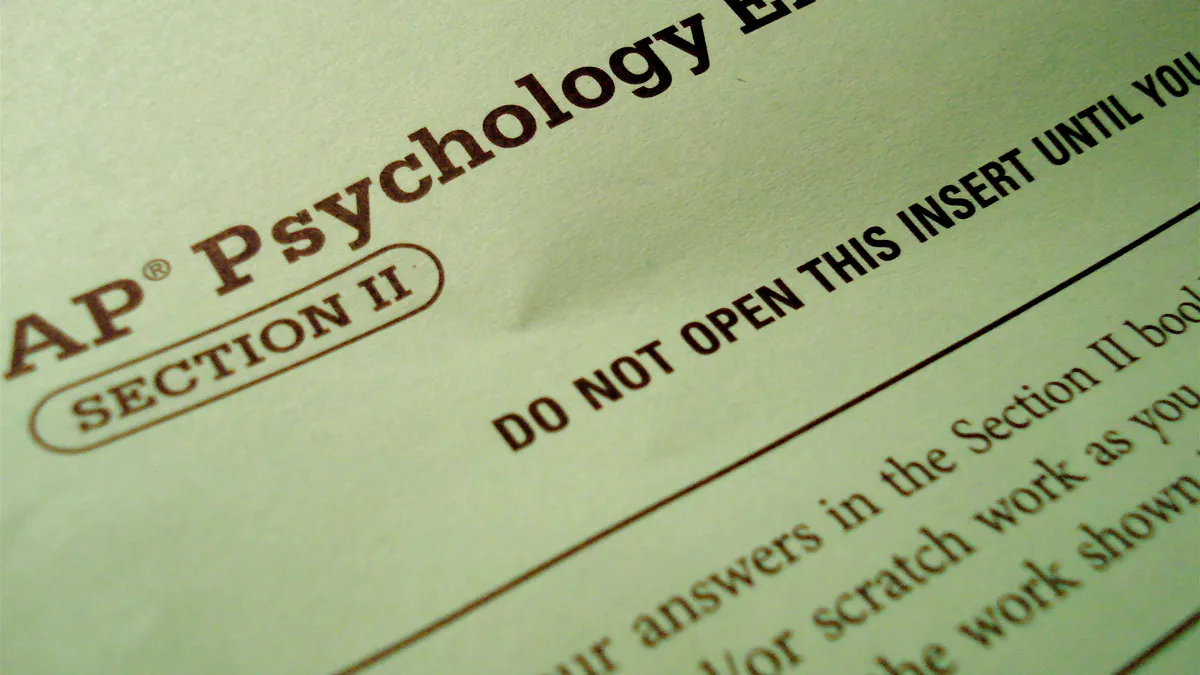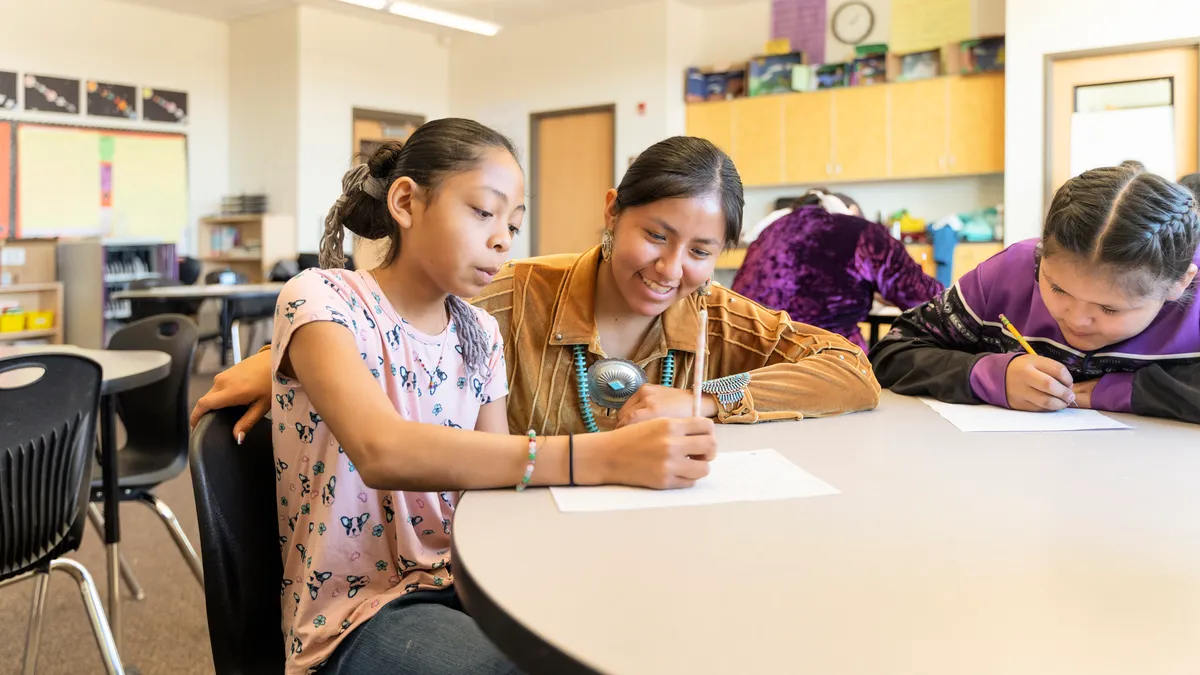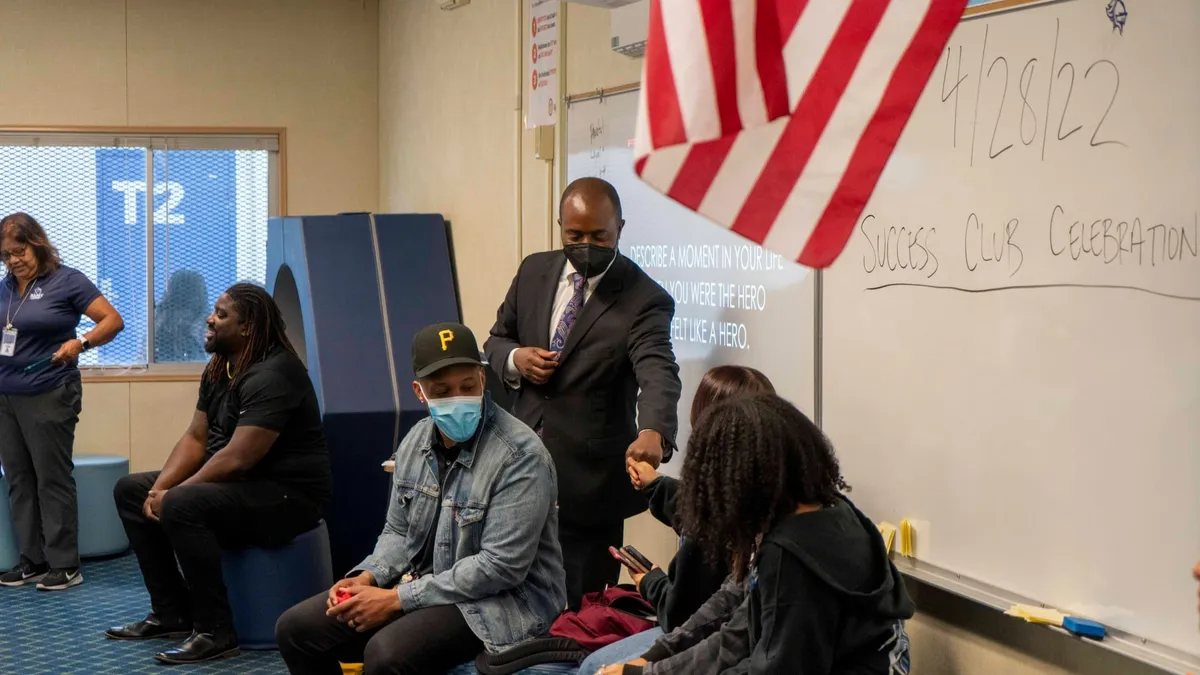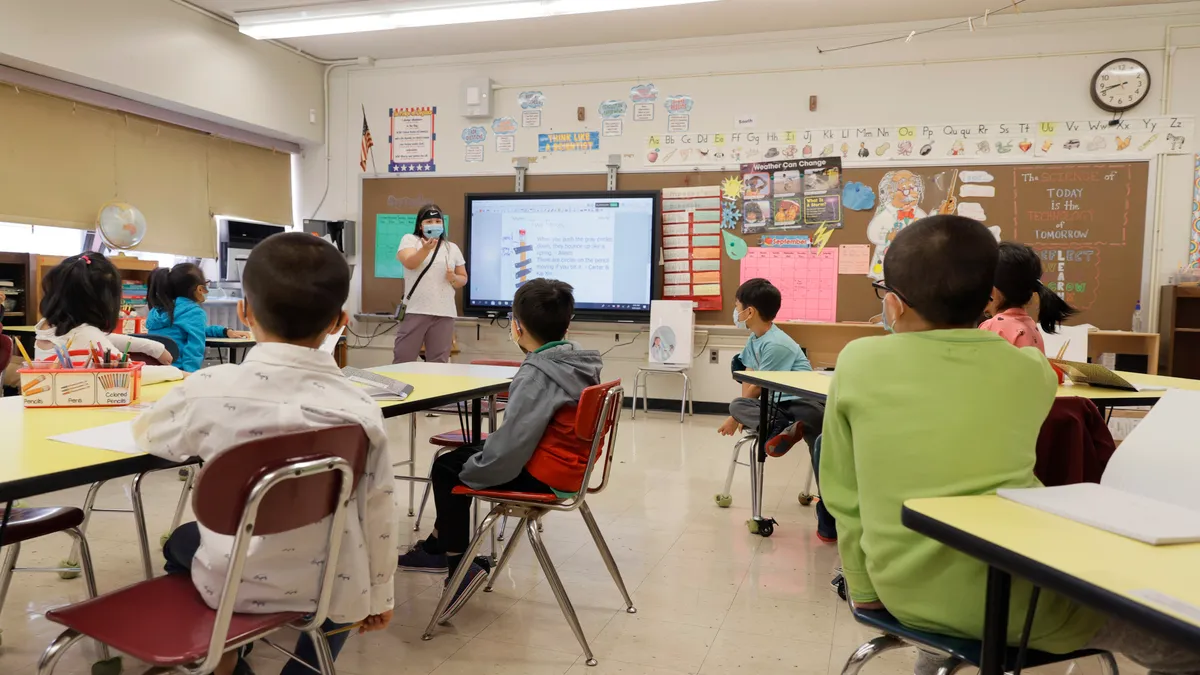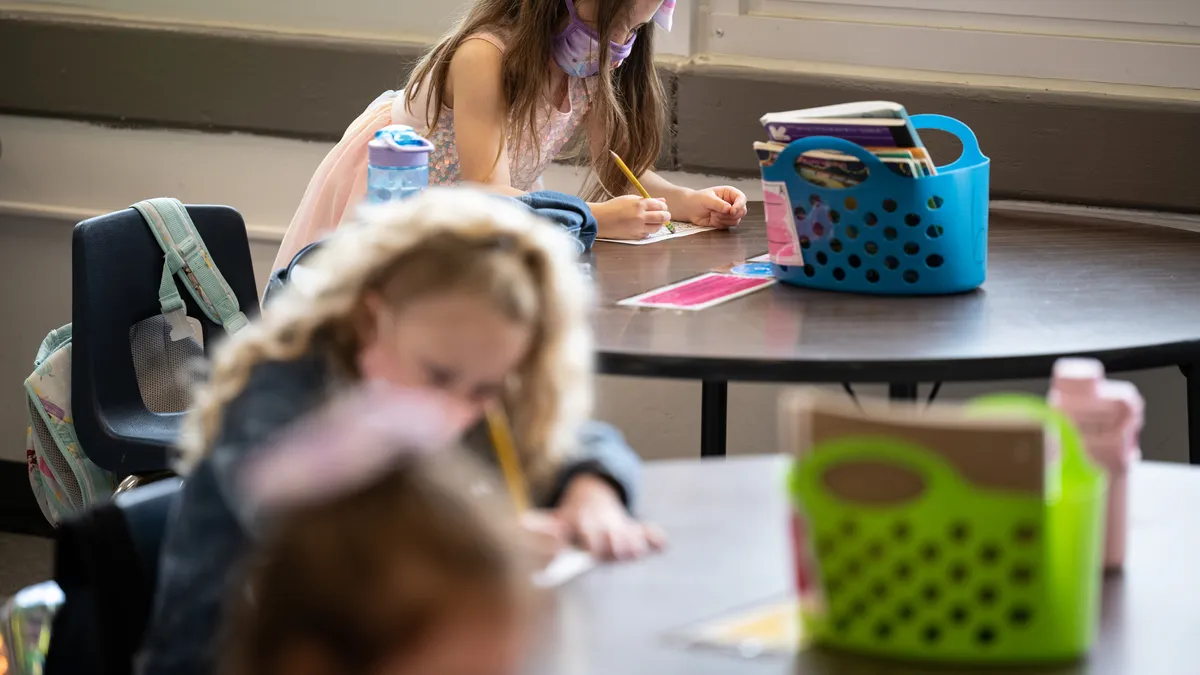Early-childhood programs — including center- and home-based settings — are twice as likely as kindergarten and 1st-grade classrooms to have all black or all Hispanic children. They’re also less likely to be “somewhat integrated” with 10-20% of children being black or Hispanic, according to a new Urban Institute study comparing segregation between K-12 schools and the variety of learning arrangements for children 5 and under.
The analysis of national early-childhood and K-12 datasets shows home-based early-childhood programs, such as family childcare homes, are more likely than center-based sites to be segregated. The authors note home-based programs in general face less regulations than center-based programs and that unlicensed sites, which can include care provided by friends and neighbors, are the most segregated.
While policymakers and many education leaders are increasingly focusing on growing racial segregation in public schools — and looking for strategies to reduce it — “segregation in early-childhood programs is even more pronounced than in K-12 classrooms,” the authors write, “and that separation can lead to missed opportunities for contact and kinship during a critical point in child development.”
While black children attend at least one non-parental care arrangement per week at greater rates than white children — 68% compared to 62% — the data still shows "greater segregation than we would expect based on enrollment alone," they add.
While segregation is similar for children from birth to age 3 and for those in the 3-5 range, the researchers did see differences across regions of the country. Early learning programs were most segregated in the Northeast and the least in the Midwest. Highly urban programs and highly rural programs were also more segregated than those in suburban areas.
The authors also note research showing even infants begin to recognize racial differences and that racial bias can form during the early-childhood years.
“This segregation matters because we have strong research documenting the benefits of diverse classrooms for children of all ages,” said Halley Potter, a senior fellow at The Century Foundation, which has published reports on charter schools that are “intentionally diverse,” including some that have preschool classrooms.
“Studies show that children learn more, in academic and social measures, when they have the chance to interact with peers who have different backgrounds and experiences. And these peer effects may be especially strong for young children in early education settings, for whom much of the day is spent in play and exploration alongside their peers."
‘Rarely considered together’
In a 2016 report, Erica Frankenberg of Pennsylvania State University, who recently published a study on the racial implications of school district secession, wrote about Obama-era education initiatives to expand preschool access and to increase diversity efforts in K-12 schools.
“The two are rarely considered together even though early childhood is one of the most important developmental windows regarding understanding difference, and preventing the formation of prejudice,” she wrote.
She notes the original Preschool Development Grant (PDG) program in 2014 included language encouraging states to “integrate, to the extent practicable” preschool programs in “economically diverse, inclusive settings.”
Whether the new PDG program for children from birth through age 5, now part of the Every Student Succeeds Act, will support integration efforts depends largely on how the 46 states that received initial funding for a needs assessment wrote their plans.
In those assessments, states were asked to determine the need for services among young children from "vulnerable" and "underserved" populations. States are currently working on applications for funding to implement those plans. But a forthcoming report from the Build Initiative, a nonprofit focusing on early-childhood education systems, will show states defined those populations in many different ways.
Creating integrated early-childhood programs is likely "beyond where many states are thinking," said Danielle Ewen, a senior policy adviser at EducationCounsel, a D.C.-based consulting organization. Most have focused on expanding services to children with the greatest needs, she said, adding that creating more integrated classrooms "is something states might think about when they are looking for best practices."
‘A fractured system’
The segregation seen in the early-childhood sector “is in large part due to a fractured system in which many low-income children are in publicly funded programs with strict income cut-offs, while higher-income children are in private programs that are unaffordable for working families,” Potter explained.
Dolores Acevedo-Garcia, director of the Institute for Child, Youth and Family Policy at Brandeis University, added that early-childhood programs in general are "hyperlocalized" and families prefer providers and centers close to home. Because many neighborhoods are segregated, programs serving young children are a reflection of the community.
The findings make a case for universal preschool programs because they “often offer parents choices in a mixed-delivery system rather than limit them to neighborhood schools,” said W. Stephen Barnett, the senior co-director of the National Institute for Early Education Research. “Children's first educational experiences should not be segregated.”
He noted, however, that even in public preschool models without income cutoffs, Head Start often insists that eligible children still attend Head Start classrooms, which “creates problems for integration.” And bilingual programs targeting English learners may also contribute to segregation, he said, while “dual language immersion and other approaches that encompass all children support greater integration.”
Acevedo-Garcia added Head Start does allow centers to enroll some families above the poverty line, but those families are still largely low-income. She added rules encouraging inclusion of children with disabilities in Head Start could also be a vehicle for more integration.
Erica Greenberg, a senior research associate in the Center on Education Data and Policy at Urban Institute, argues targeted programs don’t have to result in more segregation.
“Public child care subsidies can support children in classrooms that also serve children with family-paid tuition,” she said. Some targeted programs, for example, have a sliding fee scale for families above the income cutoffs.
Models of integration
That’s the approach at the Morris Jeff Community School in New Orleans, featured in a 2015 report on charter and magnet schools that have made diversity part of their design and also serve young children.
The school blends state funding for pre-K students from low-income families with tuition-based slots for children from higher-income families. A profile of the school quotes a pre-K teacher who said she was attracted to working in the school because she wants “students to think about other people’s point of view.”
Another model exists in the Hartford, Connecticut, region where the 1996 state Supreme Court decision in a desegregation case led to magnet school growth that includes schools serving pre-K students. The report on those models, however, notes school transportation services often don’t extend to all pre-K students, which can be a challenge for some families either because of a lack of transportation or work schedules.
Experts also recommend strategically locating high-quality programs in schools and communities that would draw a diverse mix of families. That was the result in 2006 in Cincinnati, Ohio’s Pleasant Ridge Elementary when the school, which was losing enrollment and overlooked by white families in the neighborhood, opened a Montessori preschool program and a new building. Now, 12 years later, the Montessori program has been viewed as a vehicle for revitalizing and increasing diversity in the neighborhood school.
A recent study by researchers at the University of Michigan and MDRC, focusing on the universal pre-K program in Boston Public Schools, also notes families that don’t apply for universal, public preschool programs tend to be non-white, low-income, and non-English-speaking. Policymakers and education officials focusing on pre-K expansion, they said, “should pay attention to identifying and targeting children who are unlikely to enroll in any prekindergarten program.”
Other “under-used levers” for increasing diversity in the early-childhood sector, Greenberg said, could include “mirroring intentional K-12 integration efforts via school district boundaries and assignment policies,” and using zoning regulations and funding for start-up providers and expansion to work toward more diverse programs.
But she added, “We need much better data to be able to design sound recommendations for increasing diversity in [early-childhood education].”
And Acevedo-Garcia suggests after 10 years of collecting data on segregation in early-childhood as part of diversitydatakids.org, it's still difficult to get accurate numbers. Experts also urge principals and early-childhood program directors to consider children and families’ ongoing experiences once preschool centers become more integrated.
In a recent article, Kendra Hurley, a New York City-based writer and policy researcher, shares her own experiences of enrolling her infant son in a Brooklyn child care center serving families using vouchers — mostly black and Hispanic families — as well as “private pay” families, which included more white and mixed families.
She describes a field trip to the Prospect Park Zoo in which the staff divided the families into one group that needed to pay for tickets — those on vouchers — from those who already had memberships, which turned out to be the private-pay families. The two groups remained separate throughout most of their time at the zoo, which Hurley calls “a case study in some of the ways integration goes astray when done without intent.”





 Dive Awards
Dive Awards

